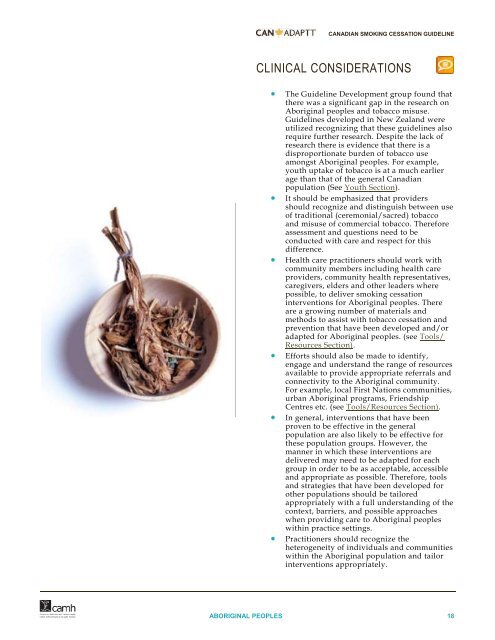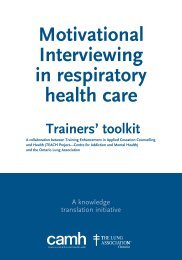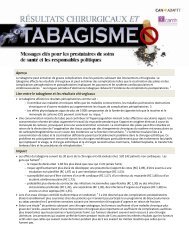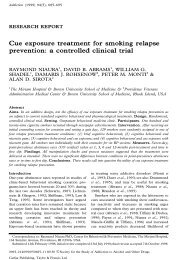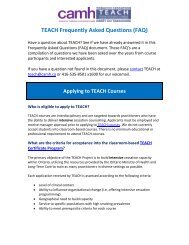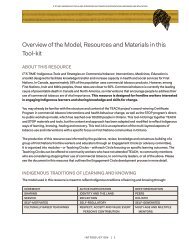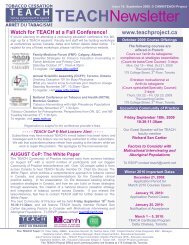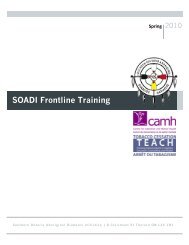Canadian Smoking Cessation Clinical Practice Guideline
Canadian Smoking Cessation Clinical Practice Guideline
Canadian Smoking Cessation Clinical Practice Guideline
Create successful ePaper yourself
Turn your PDF publications into a flip-book with our unique Google optimized e-Paper software.
CANADIAN SMOKING CESSATION GUIDELINECLINICAL CONSIDERATIONSThe <strong>Guideline</strong> Development group found thatthere was a significant gap in the research onAboriginal peoples and tobacco misuse.<strong>Guideline</strong>s developed in New Zealand wereutilized recognizing that these guidelines alsorequire further research. Despite the lack ofresearch there is evidence that there is adisproportionate burden of tobacco useamongst Aboriginal peoples. For example,youth uptake of tobacco is at a much earlierage than that of the general <strong>Canadian</strong>population (See Youth Section).It should be emphasized that providersshould recognize and distinguish between useof traditional (ceremonial/sacred) tobaccoand misuse of commercial tobacco. Thereforeassessment and questions need to beconducted with care and respect for thisdifference.Health care practitioners should work withcommunity members including health careproviders, community health representatives,caregivers, elders and other leaders wherepossible, to deliver smoking cessationinterventions for Aboriginal peoples. Thereare a growing number of materials andmethods to assist with tobacco cessation andprevention that have been developed and/oradapted for Aboriginal peoples. (see Tools/Resources Section).Efforts should also be made to identify,engage and understand the range of resourcesavailable to provide appropriate referrals andconnectivity to the Aboriginal community.For example, local First Nations communities,urban Aboriginal programs, FriendshipCentres etc. (see Tools/Resources Section).In general, interventions that have beenproven to be effective in the generalpopulation are also likely to be effective forthese population groups. However, themanner in which these interventions aredelivered may need to be adapted for eachgroup in order to be as acceptable, accessibleand appropriate as possible. Therefore, toolsand strategies that have been developed forother populations should be tailoredappropriately with a full understanding of thecontext, barriers, and possible approacheswhen providing care to Aboriginal peopleswithin practice settings.Practitioners should recognize theheterogeneity of individuals and communitieswithin the Aboriginal population and tailorinterventions appropriately.ABORIGINAL PEOPLES 18


